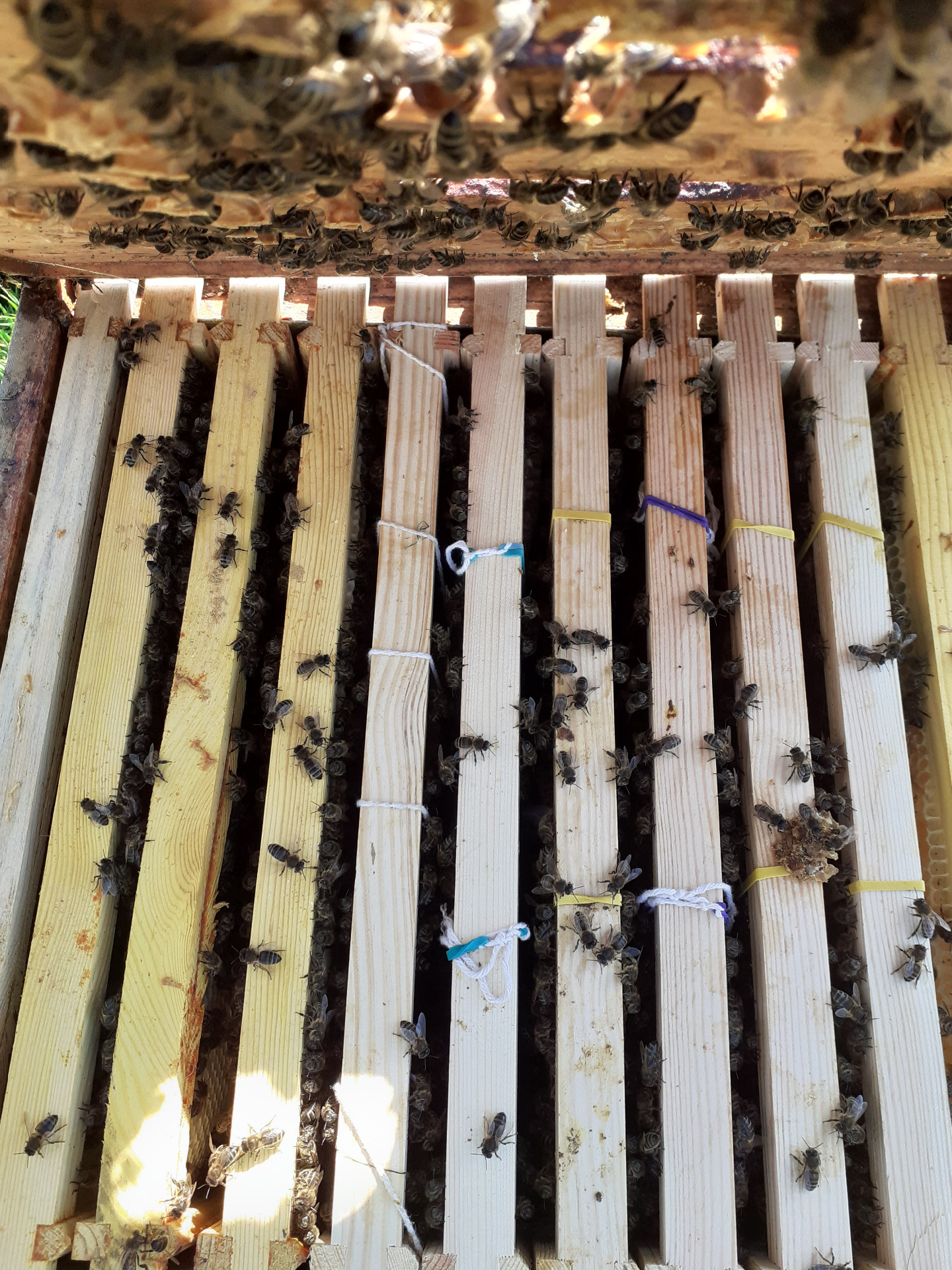Rescuing Bees from and old tree
Posted on 29th March 2020 at 18:29
A short story of a rescue of a colony of honeybees from an old tree
As so often happens these adventures start with a phone call. A chap call Dave rings me a tell me he is restoring an abandoned garden and his tree surgeon won't go near one of the trees. It's got a honeybee colony living inside it!
It was unfortunate for Simon, the tree surgeon, that he descovered the bees or should I say the bees discovered Simon. You can see from the picture he was doing rather well on this rotted out tree until the chap clearing away at the bottom of the tree started to be bothered by the flying insects. It was only a surprise to me that they were not more active. The cherry picker was set up right next to the tree with it's diesel engine running and of course there were the chainsaw buzzing away. Then add to that lumps of tree crashing around the foot of the tree and the tree moving around as limbs were parted from the stem. The bees must be a placid lot or the low air tempreature was preventing them from flying more.
The tree was in a garden of a vicarage. It was once a formal garden full of specimen trees of native and ornimental varieties. However 200 years on from planting the trees were encroaching and competeing with each other. Some trees are thriving, some are past their best and others are into their long decline.
In this case the tree in question is leaning over which is partly due to years of stretching to find the light and partly because the middle of the tree is rotting away. There are just a few branches with buds on. The bees has set up home in the rotted out void within the tree. There hive entrance is right at the foot of the tree.

Once I was on site I was able to spot for the tree surgeons Simon and Lucas. They took some comfort from the fact I was keeping an eye on the bees response to their work. They got the tree down to about 10foot (3m) We then had to work out where the top of the colony might be. I gave them a mark to cut and it happened to be correct. We just caught the top of the nest. From that point onward Lucas cut quadrants about 9inches (200mm) deep and worked around the circumference of the tree. As each quadrant cames out I cleaned off the honey comb. As we revealed more of the nest we found more bees, no surprise. The top of the colony contain honey which was sticky to remove.
As we delved further in we uncovered the brood. It was great to see a good deal of sealed brood and some larva. This means A. there is a queen is in there somewhere and B. they had been raising brood for the last three weeks. As I removed the brood comb I cut it to fit into the empty frames and used elastic bands to secure the comb in the frame. I took out four frames of brood and another few of honey.
Once the greater part of the comb was removed and the walls of the hive was disappeared it was easier to remove the actual bees. The air tempreature was not that high at 12c so the bees where not keen to fly, which was handy. A new hive was placed near the entrance of the tree that was rapidly becoming a stump. The frames were placed into the new hive. I was able to reach in to the stump and scoop out handfulls of bees which placed in to the new hive. This was done carefully as the queen cannot be damaged and you have no real chance to see her. We got the stump down to ground level scooping out comb and bees. It has to be said the bees were very calm. The new hive was placed at the back of the stump and cloth draped in front of the hives. there was a knot of bees there were not keen to leave the smell of their old home. However plenty of smoke and brushing them off the inside of the stump as well as the sun setting pursuaded the reluctant bees to join the full colony. It was really noce to see them nasanoving which indicated they were happy that the new hive is their new home. When the sun had set I closed up the hive entrance and put the hive in the truck and took them off to their new location in South Derbyshire.

If you would to join the Bee Farmer Foundation course in Beekeeping and learn more about these extraordinary creatures.
.

The next day I went over to the apiary to see how they settled in. The bees were very content. The bees were evenly distributed throughout the box. When iIinspected the frames I could see new bees emerging from the brood. I could see larvae and then the queen walked straight across the frame in front of me. See is a nice big handsome queen. The bees were eating the honey from the comb and flying dispite the cool conditions.
I think the intervention collecting the bees from the tree was very timely. The void within the tree was stuffed with comb and much of it was full of crystallsed honey. The comb I found was very dark so it was not going to be long before the hive would issues swarms and ultimately be abandoned.
Why not join The Bee Farmer's mailing list for advance notice of events and promotions?
Tagged as: Case study, Misc
Share this post:








